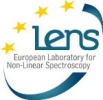How to generate a nonclassical continuous-variable (CV) state by making measurements on the discrete-variable (DV) part of a compound CV-DV system? Find out in our latest PRL paper.
Category: Quantum Optics
Jul 12 2017
Optical Kerr effect with less than one photon
We emulated the self-phase modulation typical of strong optical Kerr nonlinearity on coherent light pulses containing less than a single photon (on average). These results just appeared in PRL.
Jun 05 2017
Quantum tomography of homodyne detectors
We suggest and experimentally demonstrate a tomographic method to characterize homodyne detectors at the quantum level. Our results have just appeared in New Journal of Physics.
Apr 20 2016
A “plug and play” fiber setup for squeezed light
We demonstrate the first all-guided-wave squeezing experiment at telecom wavelengths. The results from this French-Italian collaboration just appeared in Optica and were highlighted in Optics & Photonics News.
Mar 18 2016
A “Schrödinger’s pet” machine
Our machine for turning any input quantum state into a coherent superposition has just appeared on PRL.
Jan 15 2016
A photon with no area
The recent results from the Italian-Brazilian collaboration on the generation of zero-area single-photon pulses have just appeared on PRL and have been highlighted in Physics.
Jan 14 2016
Larger noiseless amplification
Different combinations of the photon addition and subtraction operators can be effective in noiselessly amplifying coherent states of light with larger amplitudes.
Jun 29 2015
Arbitrary state orthogonalizer and qubit generator
We have provided the first demonstration of a general orthogonalization procedure that, starting from an arbitrary continuous-variable quantum state and from limited information about the state itself, can generate an orthogonal state and arbitrary coherent superpositions of the two.
Jun 28 2015
Making of a zero-area single photon pulse
Jul 01 2014
Hybrid entanglement of light
We produced entanglement between differently-encoded photonic qubits. A single-photon-based qubit state on one side and a coherent-state-based one on the other. The situation closely resembles the quantum-classical hybrid entanglement of the atom-cat system in the Schroedinger’s cat paradox. Nature Photonics made a cover out of the story (and of our image).












